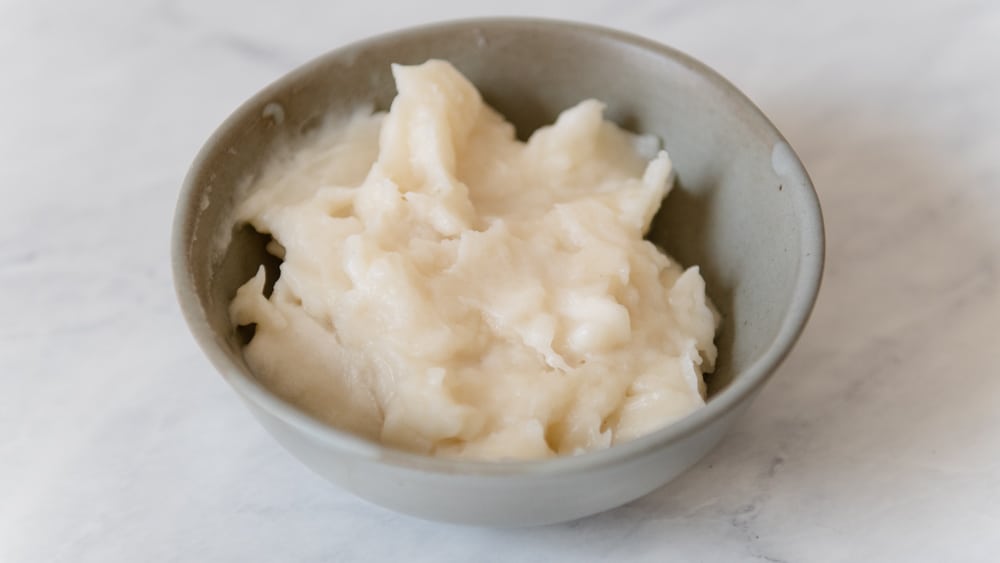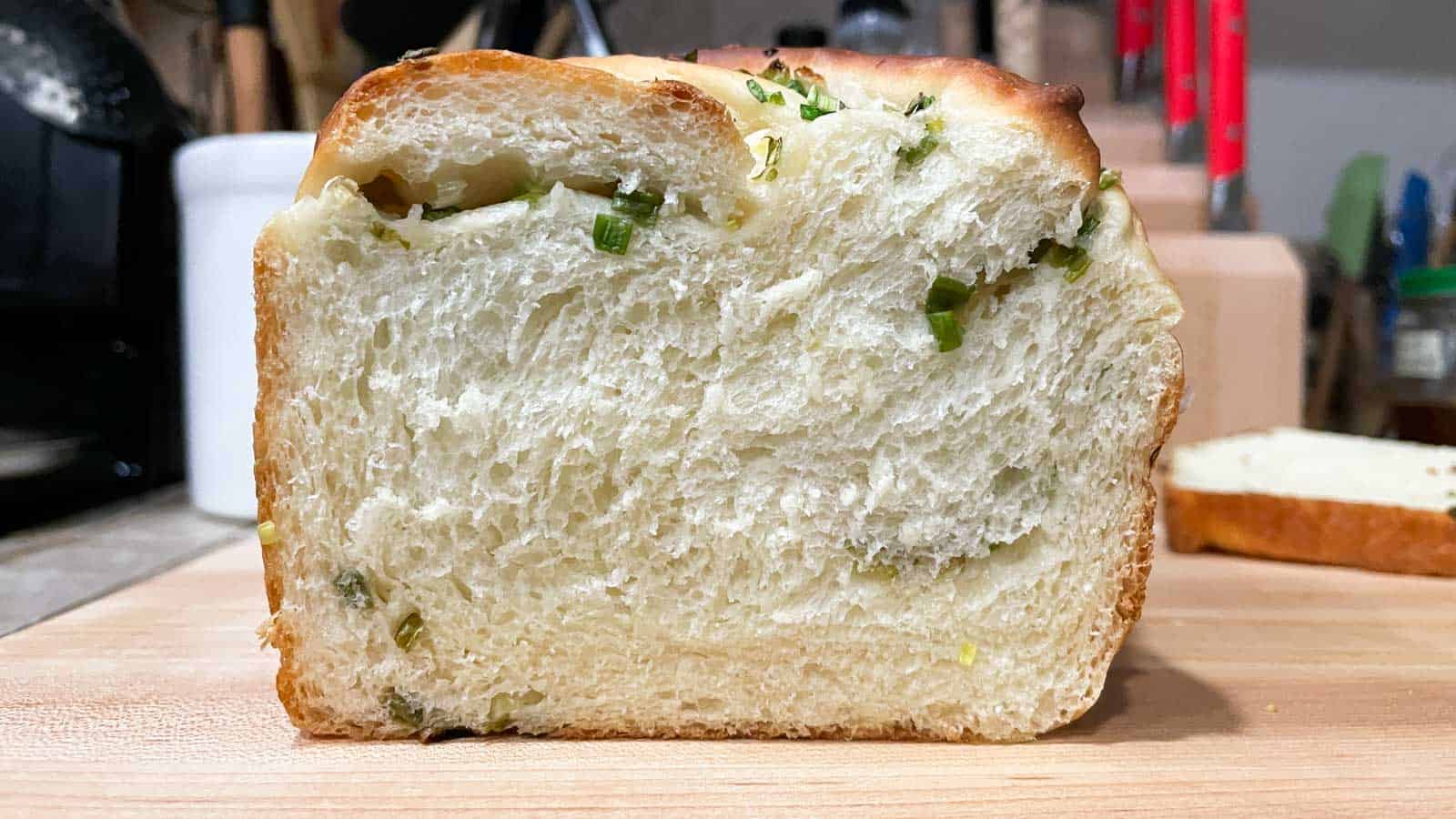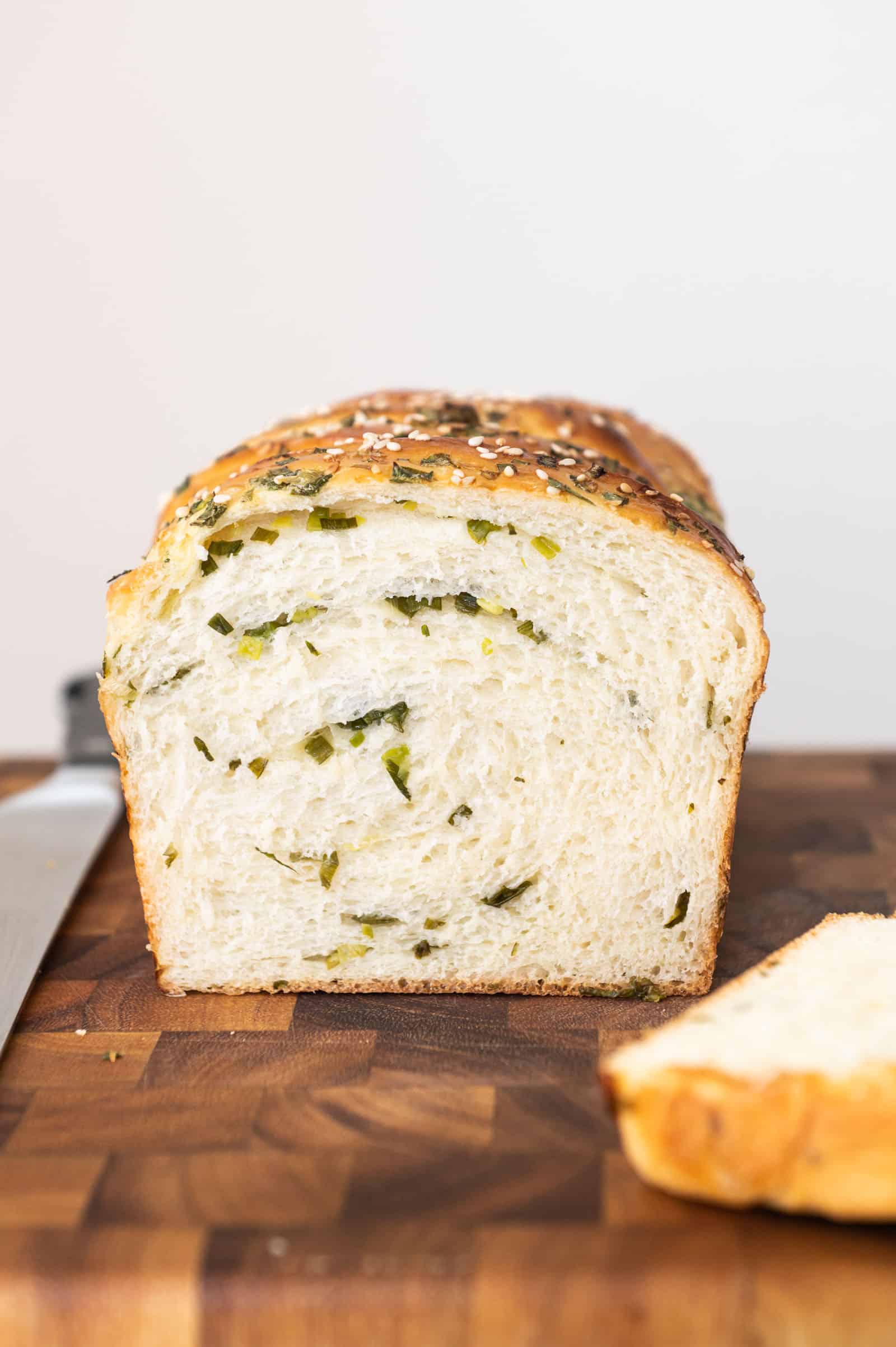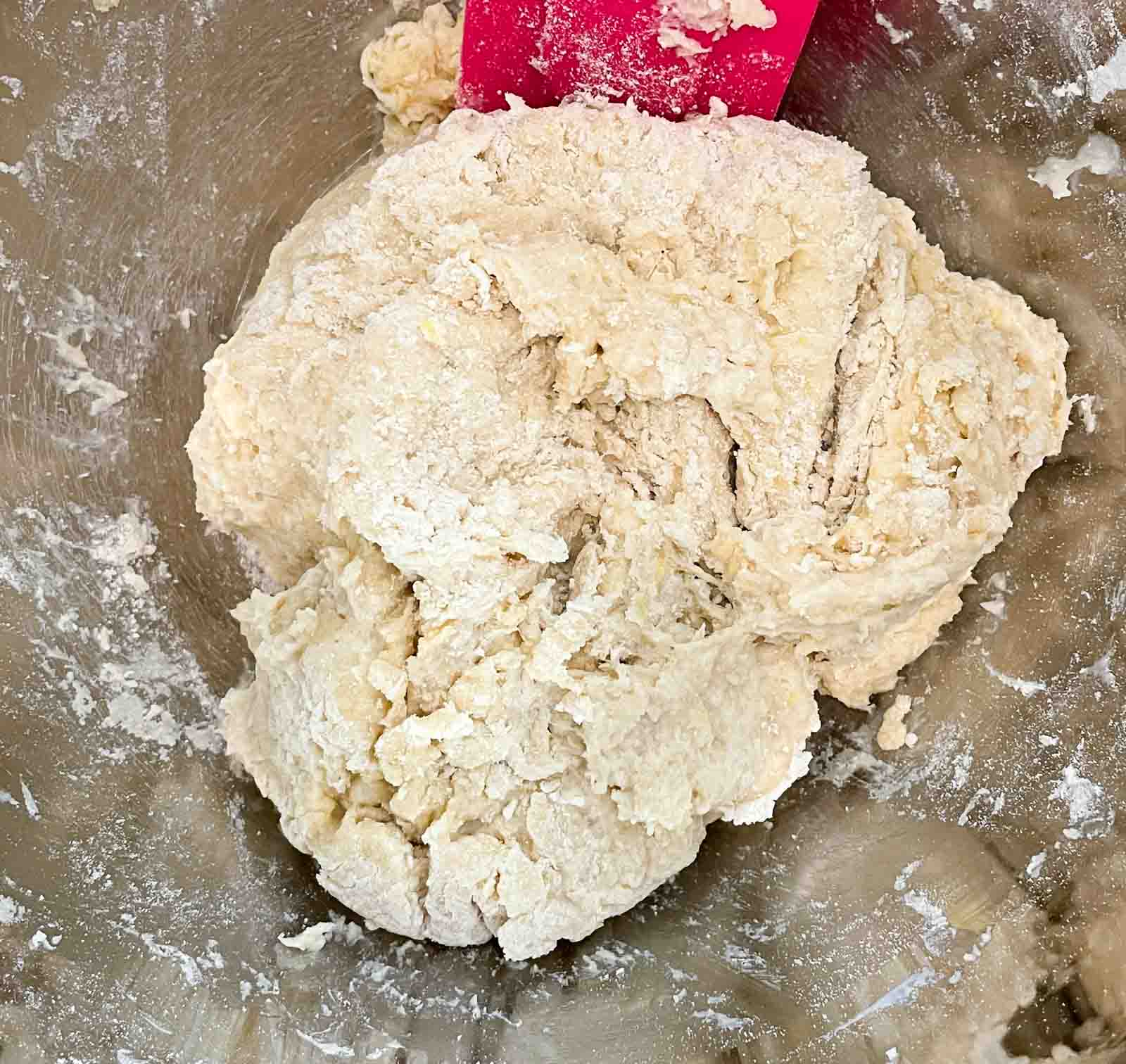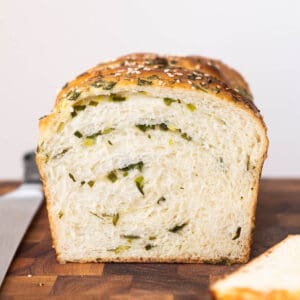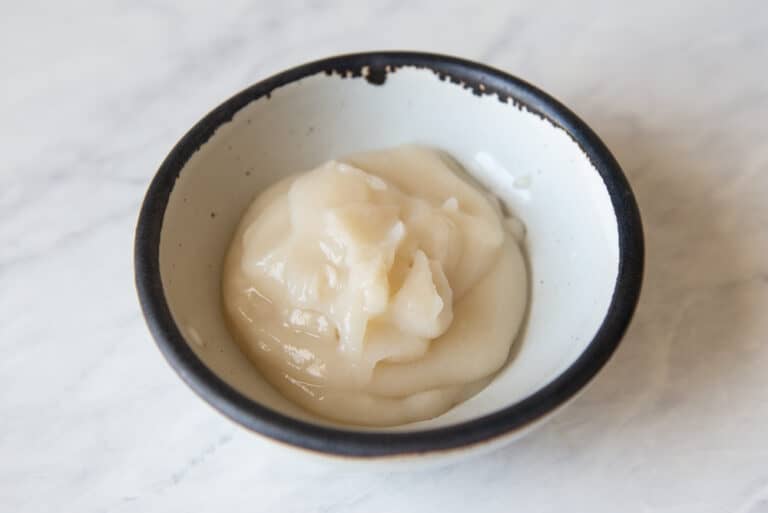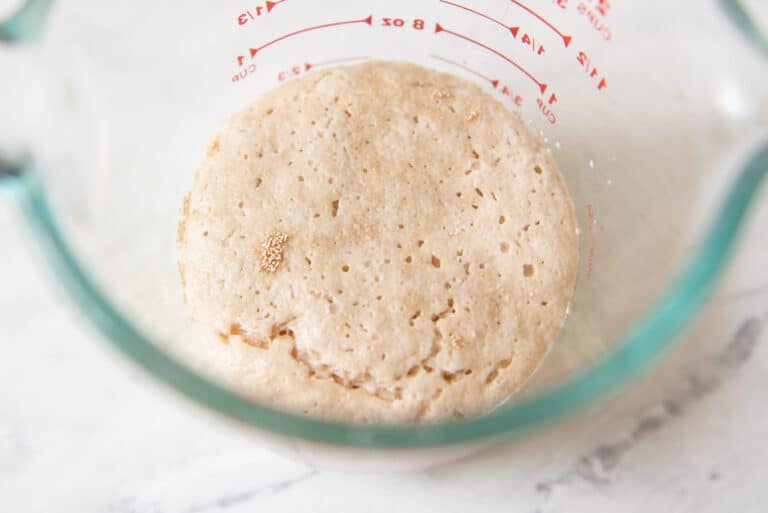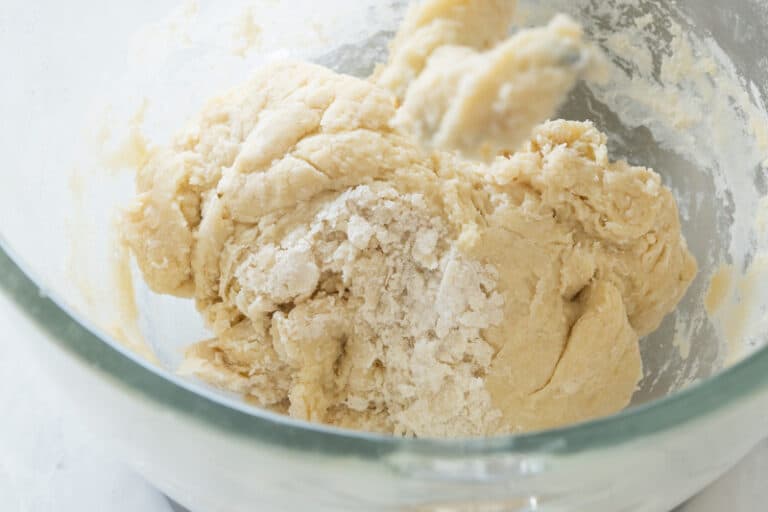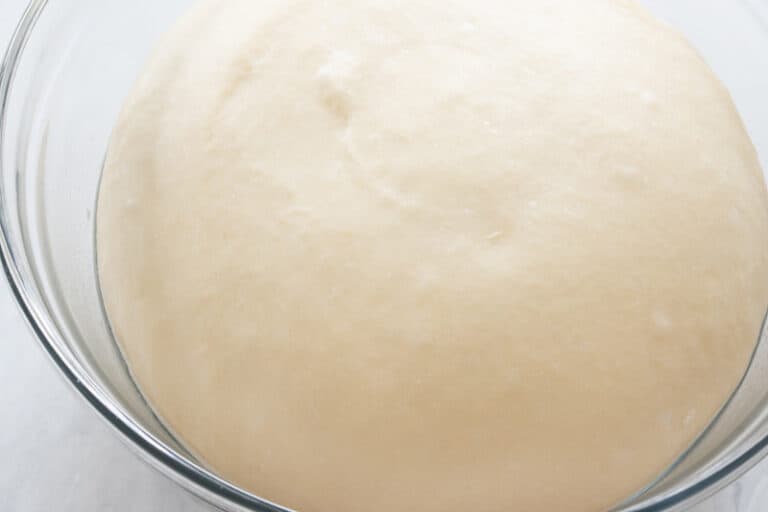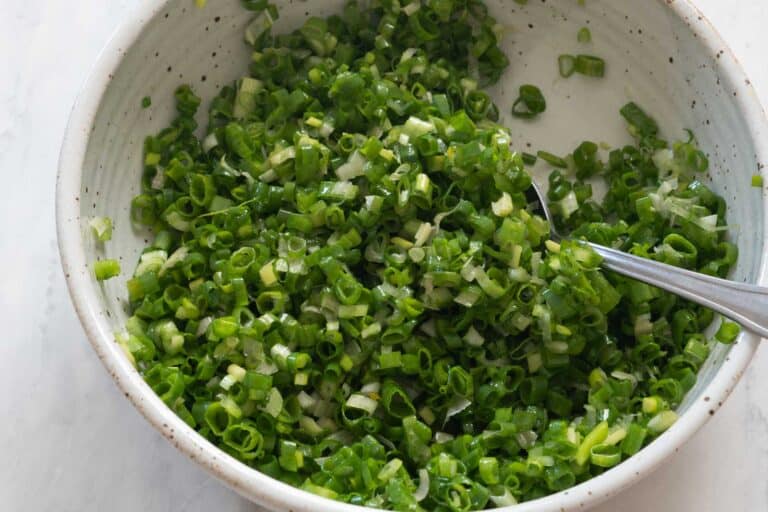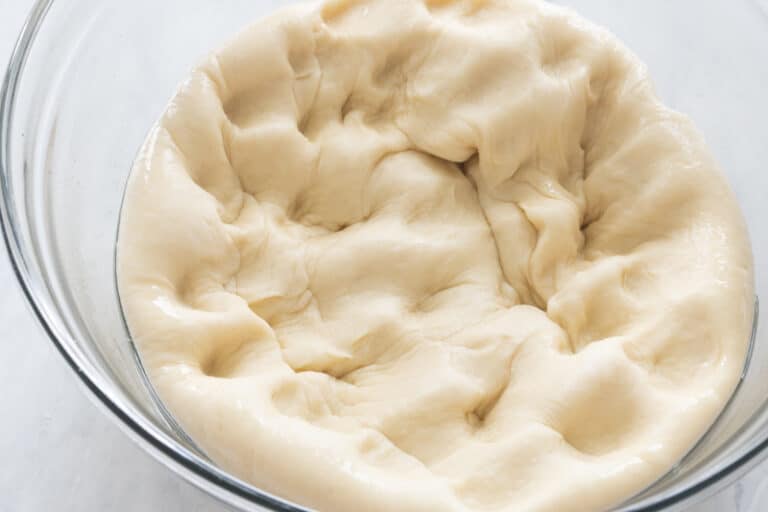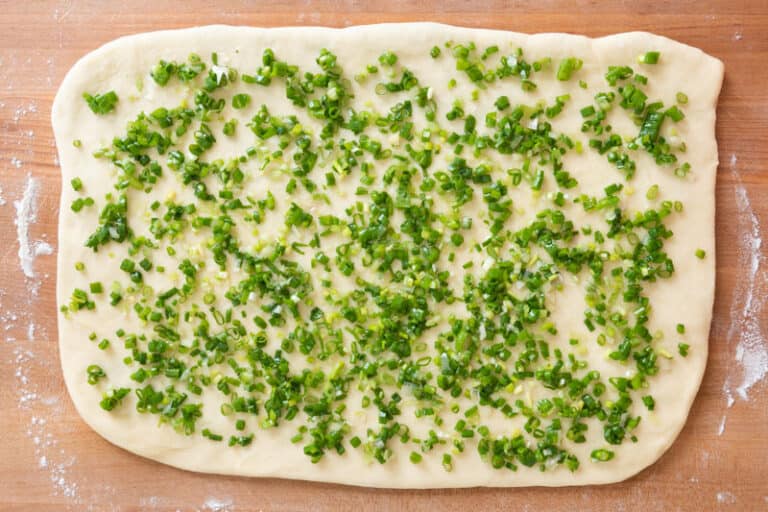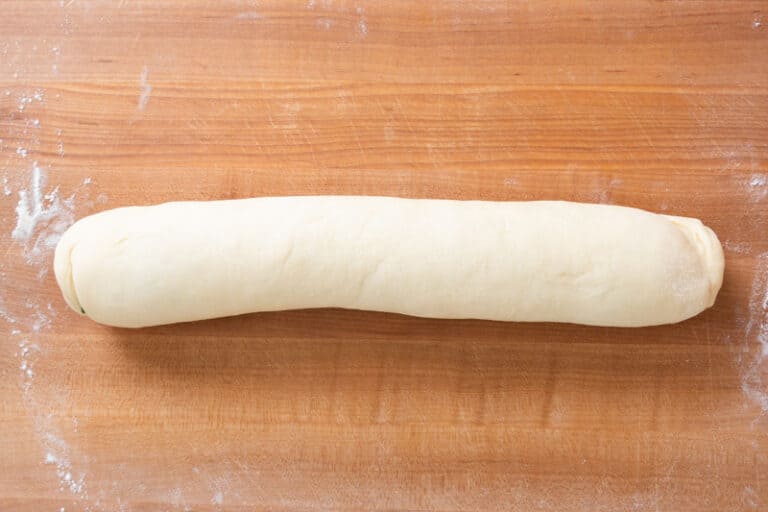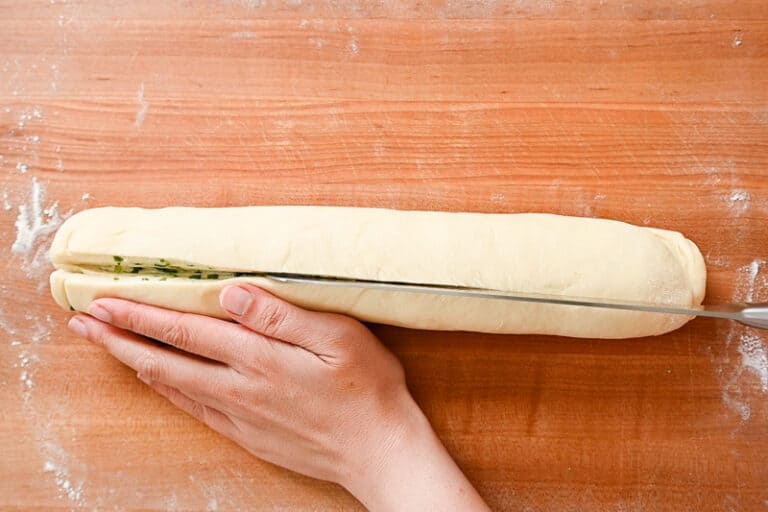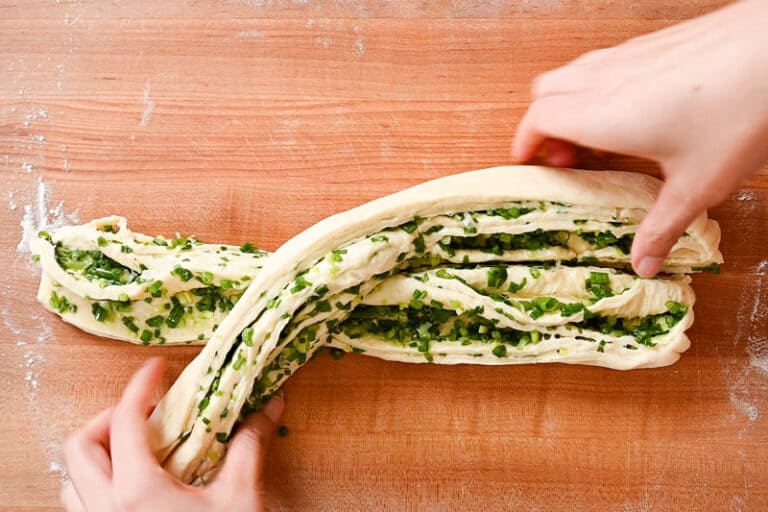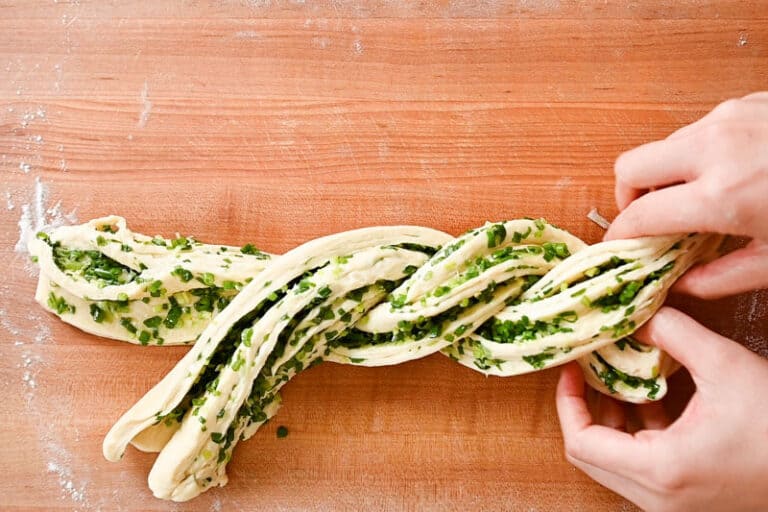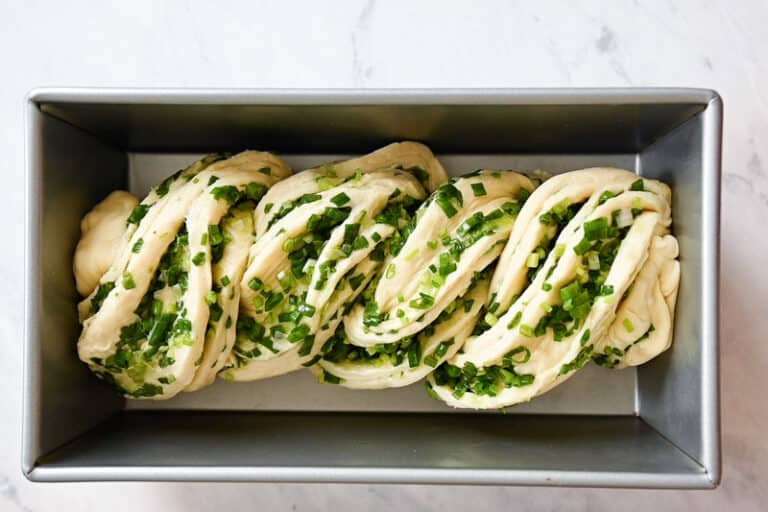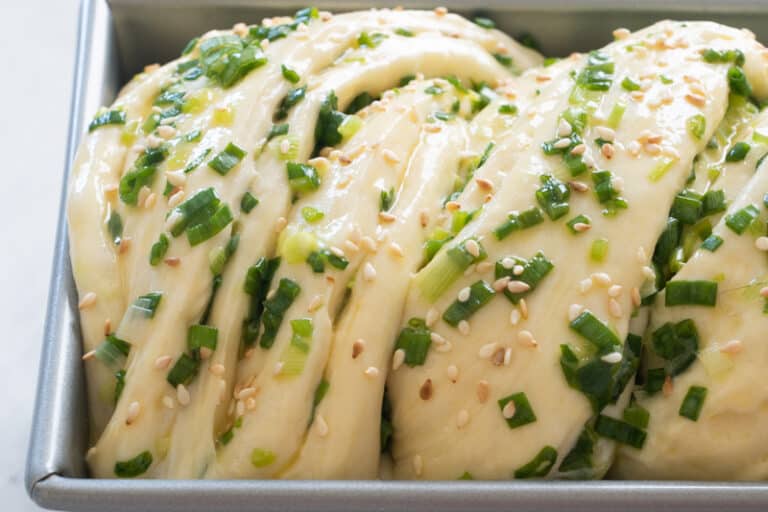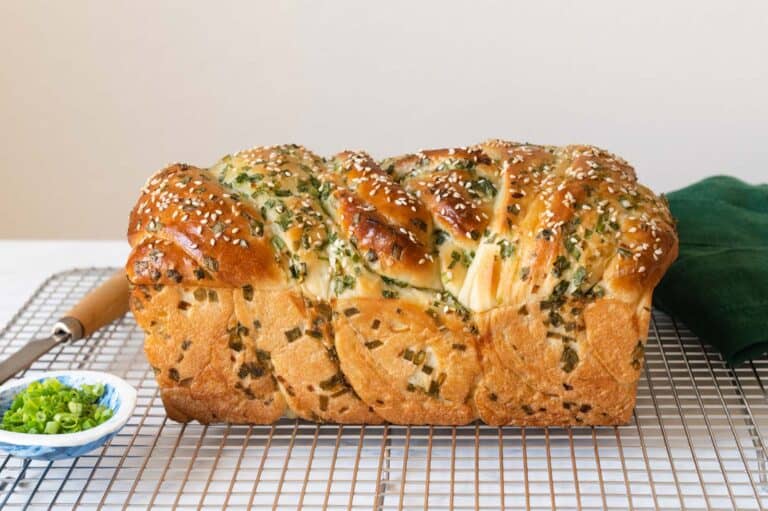TANGZHONG: THE KEY TO A SOFT LOAF
What I love most about this bread is its soft and feathery interior. To get this incredibly airy crumb, I add tangzhong (湯種) to the dough. Tangzhong is an Asian technique of heating flour and water together to form a paste that is then added to the dough. The paste allows more water to be absorbed into the flour, yielding bread with softer texture. Not only is the bread soft the day it’s baked, but the crumb stays soft a few days later too!
TESTING THE SCALLION MILK BREAD
To develop this recipe, I adapted my Japanese milk bread and baked scallion bread recipes. As I tested this recipe, I tried shaping the loaf in many ways. I wanted to shape the bread like a babka because I love how the twists look at the top of the loaf. But after baking the bread a few times, I found the distribution of the scallion filling very inconsistent. Most of the time, the scallion filling ended up on the top of the loaf with a few tiny scatterings of scallions in the center. Next, I tried shaping the dough like a cinnamon swirl loaf with the scallion filling swirled inside. That didn’t work either because the center of the bread collapsed as it cooled. Because there was so much scallion filling in the center, the inner swirl couldn’t cling onto the exterior of the bread completely. As a result, there were large holes in the interior of the bread. Finally, I decided to add the scallion filling to the bread in 2 additions. Essentially, I rolled out the dough into a rectangle once and spread half of the filling over the dough. Then, I fold it up, roll the dough into a rectangle again, spread the remaining filling, and shape the loaf like a babka. This final method of shaping the scallion milk bread yielded the best results. The scallion filling was much more evenly distributed.
CAN I KNEAD THE DOUGH BY HAND?
Typically, I use my stand mixer to work the dough because it feels very wet at the beginning. However, it is possible to knead the dough by hand; it will take more time and be a messier process. Once you’ve made the tangzhong and activated the yeast, add all the ingredients for the dough in a bowl. Using a wooden spoon, mix everything together until it looks like all the liquids have absorbed into the flour (see photo below). Lightly dust the work surface with flour. Have a bench scraper ready to scrape wet dough off the counter. Transfer the dough onto the floured surface. Knead it a few times. Then grab onto the bottom half of the dough and stretch it towards you. Fold it over the other half. Repeat the stretch and fold process for several minutes. Use the bench scraper to scrape off dough that’s stuck to the work surface. It won’t be easy at the start because the dough is very wet and sticks to your fingers. Just keep going as best you can. After a few minutes, grab all the dough, slap it on the counter, stretch it towards you, and fold it over. Repeat this process until the dough no longer feels like it’s really sticky on your hands. When kneading dough by hand, don’t pay attention to how long you’re kneading the dough. Rather, focus on how the dough feels. By the end, the dough will feel slightly tacky but not overly sticky. Finally, do the window pane test to make sure the gluten has been properly developed. Take a golf-ball size of dough and stretch out the center of the piece of dough. If the dough stretches out to a thin layer and light is coming through, the dough is ready for the first rise.
CAN I MAKE THE DOUGH AHEAD?
Yes! Right after you knead the dough in the mixer or by hand, place the dough in a greased bowl, cover, and let it rise overnight. When you are ready to bake the next day, just shape the dough directly out of the fridge. You don’t need to let it reach room temperature first.
MORE BREAD RECIPES
Milk Bread Cinnamon RollsPineapple BunsCoconut BunsScallion & Pork Floss Rolls

